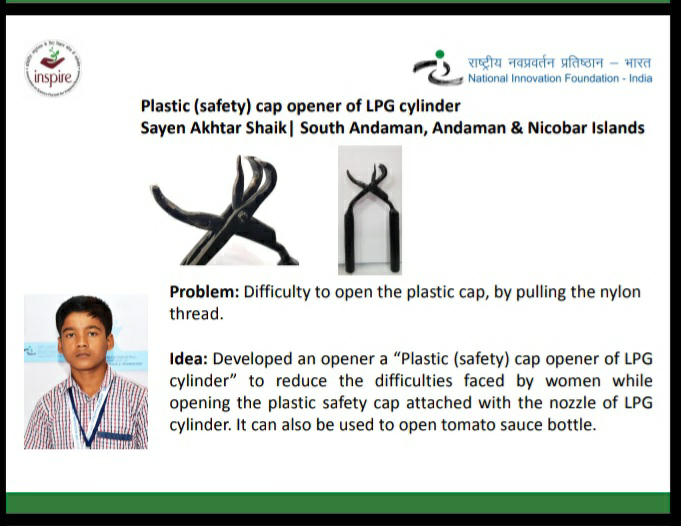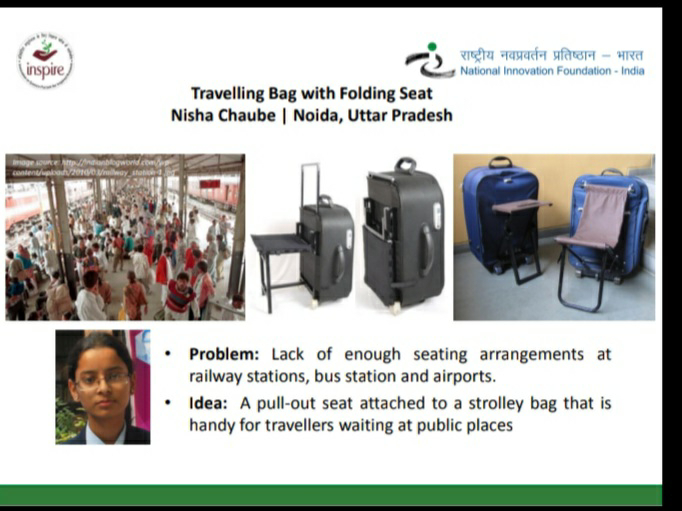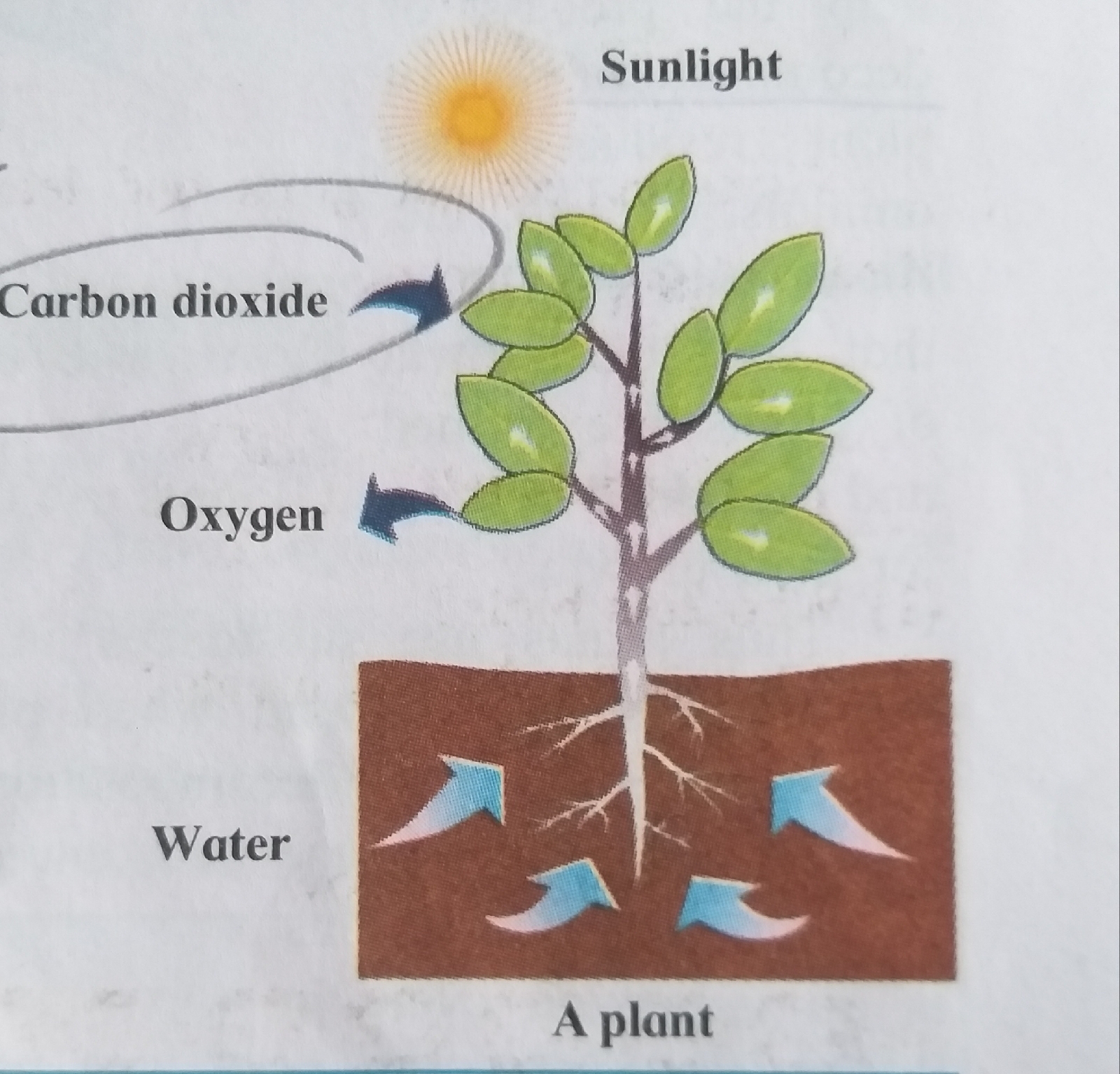Monday, August 2, 2021
IDEA Competition- Innovators of Tomorrow
Thursday, July 29, 2021
Ch.9 Motion and Types of Motion
Question 1:
Identify the types of motion.
(a) Movement of the earth around the sun : .......... .
(b) Movement of a ceiling fan : ..........
(c) A meteor falling from the sky : .......... .
(d) A rocket launched from the ground : ..........
(e) A fish swimming in water : ..........
(f) The plucked string of a sitar : .......
ANSWER:
(a) Movement of the earth around the sun : Circular and periodic motion.
(b) Movement of a ceiling fan : Circular motion.
(c) A meteor falling from the sky : Non-uniform linear motion.
(d) A rocket launched from the ground : Non-uniform linear motion.
(e) A fish swimming in water : Random motion.
(f) The plucked string of a sitar : Oscillatory motion
Page No 69:
Question 2:
Fill in the blanks.
(a) If a ball is released from the terrace of a building, it comes down in ........... motion. On the other hand, it reaches the ground in ........... motion if it is thrown with force away from the terrace in a direction parallel to the terrace.
(b) The motion of an aeroplane on the runway before take-off is.......... .
(c) The kite looking for its prey flies with .......... motion in the sky.
(d) Children sitting in a rotating giant wheel have ........... motion, while those sitting in a merry-go-round have a ........... motion.
(Linear, non-linear, circular, uniform linear, non-uniform linear, uniform circular, non-uniform circular, random)
ANSWER:
(a) If a ball is released from the terrace of a building, it comes down in non-uniform linear motion. On the other hand, it reaches the ground in non-linear motion if it is thrown with force away from the terrace in a direction parallel to the terrace.
(b) The motion of an aeroplane on the runway before take-off is non-uniform linear motion .
(c) The kite looking for its prey flies with random motion in the sky.
(d) Children sitting in a rotating giant wheel have non-uniform circular motion, while those sitting in a merry-go-round have a uniform circular motion.
Page No 69:
Question 3:
How are we different?
(a) Oscillatory motion and linear motion.
(b) Linear motion and random motion.
(c) Random motion and oscillatory motion.
ANSWER:
(a)
| Oscillatory motion | Linear motion |
| The type of motion in which the object moves back and forth repeatedly is known as oscillatory motion. | The type of motion in which the object moves from one point to another in a straight line is called linear motion. |
| For example: Movement of the pendulum of a clock | For example: Vehicles moving on a straight road |
(b)
| Linear motion | Random motion |
| The type of motion in which the object moves from one point to another in a straight line is called linear motion. | The type of motion in which the direction of motion and the speed of an object changes continuously is called random motion. |
| For example: Vehicles moving on a straight road | For example: Children playing in a garden |
(c)
| Random motion | Oscillatory motion |
| The type of motion in which the direction of motion and the speed of an object changes continuously is called random motion. | The type of motion in which the object moves to and fro repeatedly about a mean or a fixed position is known as oscillatory motion. |
| For example: Children playing in a garden | For example: Movement of the pendulum of a clock |
Page No 69:
Question 4:
Explain in your own words, giving one example each.
(a) Linear motion
(b) Oscillatory motion
(c) Circular motion
(d) Random motion
(e) Periodic motion
ANSWER:
(a) Linear motion: An object is said to have linear motion if it moves from one point to another in a straight line. For example: The motion of a moving car on a straight road.
(b) Oscillatory motion: The type of motion in which the object moves to and fro repeatedly about a mean or a fixed position is known as oscillatory motion. For example: The movement of pendulum of a clock.
(c) Circular motion: An object is said to possess circular motion if it moves from one point to another in such a way that its distance from a fixed point always remains constant. For example: The movement of the blades of a fan.
(d) Random motion: The type of motion in which the direction of motion and the speed of an object changes continuously is called random motion. For example: Children playing in a garden.
(e) Periodic motion: An object is said to possess periodic motion if it moves in such a way that it repeats its motion after a certain interval of time. For example: The motion of a swing.
Page No 69:
Question 5:
Answer the following questions in your own words.
(a) Which types of motion are seen in birds flying in the sky ?
(b) Write in detail about your experience of various types of motion while riding a bicycle on a road.
ANSWER:
(a) Birds flying in the sky have random motion as their direction of motion and speed continuously changes.
(b) While riding a bicycle on a road, following types of motion can be seen:
- The wheels of the bicycle are in uniform or non-uniform circular.
- The legs of the person riding the bicycle are in uniform or non-uniform circular motion.
- The bicycle is in uniform or non-uniform linear motion. It can also be in non-uniform motion.
Page No 69:
Question 6:
Complete the puzzle using words for types of motion :
(1) a spring is stretched and one end is released
(2) a minute hand
(3) a see saw
(4-5) children in a march past
(6) a stone rolling down a hillside..png)
ANSWER:
.png)
Paper Pattern & Portion Class:V
UNIT TEST EXAMINATION (2021-2022) STD.V SUBJECT: EVS I MARKS-10 TIME: 01 HR
Q.1. A) Choose the correct alternative and write it along with it allotted alphabet. 01 Mark
B) Answer the following 01 Mark
Q.2 A) Give Reasons: (Any 01) 01 Mark
B) Answer the following (Any 02) 04 Marks
Q.3 Answer the following:(Any 01) 03 Marks
Portion:
Ch.1- Our Earth and Our Solar System
Ch.2- Motions of the Earth
Ch.3- The Earth and Its Living World
Friday, July 2, 2021
Ch.2 Motions of the Earth
Chp 2. MOTIONS OF THE EARTH
1.
What’s the solution ?
Amit wants to
take his granny to Australia which is in the southern hemisphere. But she
cannot bear very cold weather. When should they make this trip ?
Ans.
(a) Amit’s granny cannot bear cold weather. Hence, she should visit Australia
during summer. (b) Australia is situated in the southern hemisphere. It
experiences summer season during the period of 23rd September to 22nd March.
(c) Considering this, they should make the trip to Australia anytime between
October to mid-March.
2. Use your brain power!
(i) How many rotations does the earth complete during
one revolution around the sun?
Ans: The earth completes one rotation
in 1 day. It takes 365 days and 6 hours i.e., 1/4 day to complete one
revolution. This means, during one revolution around the sun, the earth
performs 365 and 1/4 rotations.
(ii) It is
sunrise at Itanagar in Arunachal Pradesh. Write the names of the following
cities in the order in which the sun will rise there. Mumbai (Maharashtra),
Kolkata (West Bengal), Bhopal (Madhya Pradesh), Nagpur (Maharashtra).
Ans:
The earth rotates from west to east. The sunrise is observed earlier in the
eastern states and gradually it is seen by western states of India. The order
in which the sun will rise in the given cities is: Itanagar (Arunachal
Pradesh), Kolkata (West Bengal), Nagpur (Maharashtra), Bhopal (Madhya Pradesh)
and Mumbai (Maharashtra)
3.Fill in
the blanks
(You must write the answers for this question on your
own)
4. What is
meant by each of the following terms?
(i) Full moon
(ii) New moon (iii) Lunar month (iv) Tithi
Ans: (i) Full
moon: When a complete and round moon is seen in the sky, it is called as full
moon.
(ii) New moon:
When the moon is not at all visible in the sky from the earth, it is called as
new moon.
(iii) Lunar
month: The duration of 28 to 30 days between a new moon to the next new moon is
called a lunar month.
(iv) Tithi:
Every day of the lunar month is called as tithi.
5.
Answer the following questions.
(i) What is the equator?
Ans:
(i) An imaginary circle around the surface of the earth, exactly in between the
north and south poles is called the equator.
(ii) What are the two parts of the earth made by the
equator ?
Ans:
The two parts of the earth made by the equator are: (a) Northern hemisphere (b)
Southern hemisphere
**********************************************************
Wednesday, June 30, 2021
Dr. Homi Bhabha Balvaidnyanik Competition 2021-2022
- Who can participate: - Students studying only in 6th std. and 9th std.
- Medium :- English and Marathi
(Note :- Students from Semi-English can choose medium either English or Marathi as per their comfort level but once selected medium should be remains same for all the remaining phases of the competition.) - Boards :- All Boards (Maharashtra SSC / CBSE / ICSE / IB etc.
Syllabus
Less emphasis will be given for knowledge based questions and more emphasis for understanding, reasoning, correlation, application etc. Majority of the questions will be from Maharashtra state board science text books and Content related to the above from ICSE,IB and CBSE science textbooks. The questions related to general knowledge in science and science around day to day life.
- For 6th std.- Textbooks of 4th ,5th and 6th std. of S.S.C. syllabus and Content related to the above from ICSE ,IB and CBSE books.
- For 9th std. - Textbooks of VII ,VIII and IX std of S.S.C. syllabus and Content related to the above from ICSE,IB and CBSE books.
a) Approximately 10 % questions on 4th std. syllabus,
b) Approximately 20 % questions on 5th std. syllabus,
c) Approximately 60 % questions on 6th std. syllabus,
d) Approximately 10 % questions on General knowledge in science.
a) Approximately 10 % questions on 7th std. syllabus
b) Approximately 20 % questions on 8th std. syllabus,
c) Approximately 60 % questions on 9th std. syllabus,
d) Approximately 10 % questions on General knowledge in science
Fees
Competition Fee :- ( per student)
Don’t deposit competition fee in bank, pay online.
- Rs. 250 /- For All regions & All types of schools (With Regular Fee)
- Rs. 300 /- For Individual registration ( Students who are not able to register his /her name through school.)
Competition Fee :- ( per student)
Don’t deposit competition fee in bank, pay online.
- Rs. 250 /- For All regions & All types of schools (With Regular Fee)
- Rs. 300 /- For Individual registration ( Students who are not able to register his /her name through school.)
Stages of Competition :-
- Phase I : Online theory competition
- Phase II :Online practical competition
- Phase III :A. Online General interview and B. OnlineSubmission and evaluation of action research project
- Phase I : Online theory competition
- Phase II :Online practical competition
- Phase III :A. Online General interview and B. OnlineSubmission and evaluation of action research project
Structure of the Competition
DR. HOMI BHABHA BALVAIDNYANIK COMPETITION SCHEDULE 2021-22
| Sr. no | Description | Details |
| 1 | Accepting online entry forms (Registration) | Tuesday. 17th Aug. 2021 to Thursday 16th Sep. 2021 |
| 2 | Accepting online entry forms with late fee Rs 50 per student | Wedn. 17th Sep. 2021 to Thursday 30th Sep. 2021 @ 5 PM |
| 3 | Online Theory competition | Std: 9th (Tentative) Sun. 21st Nov.2021(Slot wise) Std: 6th (Tentative) Sun. 28th Nov.2021(Slot wise) |
| 4 | Result of theory competition | Tentative 2nd week of December 2021 |
| 5 | Online practical competition | Std: 9th(Tentative) Sun. 9th Jan. 2022 Std: 6th(Tentative) Sun. 16th Jan. 2022 |
| 6 | Result of practical competition | Tentative 1st week of Feb. 2022 |
| 7 | Submission of action research project report | Tuesday15th March 2022 |
| 8 | General Interview | Tentative Sun. 20th March 2022 |
| 9 | Action Research Project Interview | Tentative Sun. 27th March 2022 |
| 10 | Online Prize Distribution Ceremony | Tentative Sun. 10th April 2022 |
Please Note : Note: Please note that in view of pandemic situation (Covid -19), Organizer’s reserve the right to make change in schedule on any stage of competition.
Contacts : The incharge allotted to your region ¼ Call only between 9 am to 6 pm½
Contact Numbers of incharge with region
1) Mumbai region
¡) Smt. Amruta Sawant 9167335197
ii) Shri.Mahadev Yadav 9221350354
Web address: www.msta.in
Sunday, June 27, 2021
Ch.1.Our Earth and Our Solar System (Std.5)
जुनी पेन्शन बाबत
1/3/2024 जूनी पेन्शन बाबत जूनी पेन्शन योजना लागू होण्यासाठी महाराष्ट्र राज्य शिक्षक परिषदेनै..2010 पासून 38आंदोलनै केली... नागपूर चा12 डिसें...
-
Subject:Science Portion as follows: Chapter 1 - The living word : Adaptations and Classification Chapter 2 - Plants : Structure and Function...
-
PRACTICE PAPER Q.I) Choose the correct alternative with the alphabet against th...
-
Question 1: Find my match! 'A' Group 'B' Group (1) Lotus (a) Flower and leaves attract insects (2) Aloe (b) Haustorial roo...



























